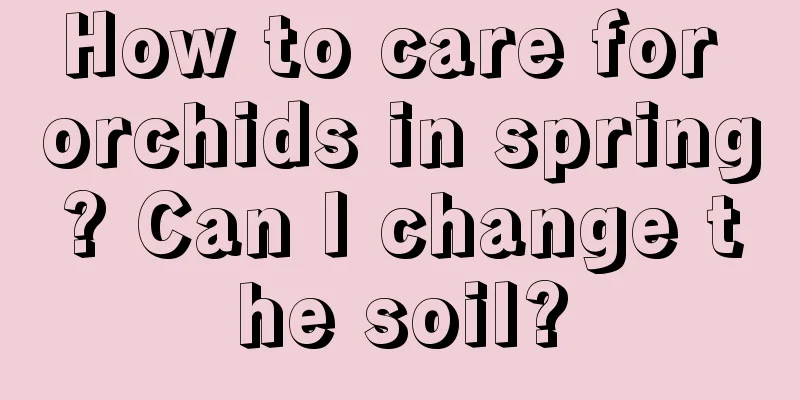Gardenia turns yellow and buds fall off without blooming. Here is one step to make the gardenia bloom immediately.

GardeniaWhat should I do if the leaves turn yellow?1. Add 1 to 3 drops of vinegar when watering, especially for those who grow gardenias in the north. Alkaline soil is the main reason for the yellowing leaves of gardenias. Or pour 0.2% ferrous sulfate. If both new and old leaves are like this, then it is obvious that the soil is alkaline. 2. Another more common reason is over watering. As shown in the picture below, the leaves at the bottom are starting to turn yellow, while the tender leaves at the top remain the same. If the leaf veins are green and only the leaf flesh is yellow, it means you have watered too much. Loosen the soil in the pot, place it on a well-lit balcony, open the windows for ventilation, and let the moisture in the soil evaporate as quickly as possible. At the same time, pick off the leaves that have turned yellow, as keeping them is a waste of nutrients. The subsequent maintenance and watering should be appropriate. If you don’t know how to water, you can use a stupid method. Find a small stick and insert it 3~4cm into the soil, let it stand for 10 minutes, and then pull it out. If the stick is just wet, you can water it. Don't wait until the stick is completely dry before watering it, as it is not good for the gardenia, after all, gardenia likes moisture. In addition, after watering, spray water on the leaves of gardenia every day. Gardenia is native to the south, and you can imagine the humidity in the south, it must be at least 50%! 3. Too much fertilizer. This symptom is easy to identify. Look at the yellow leaves. If the veins turn yellow and there is some green on the edges, it means that too much fertilizer has been applied. In the picture below, the leaf veins have completely turned yellow, but some green can still be seen in the leaf flesh. There are two ways to deal with fertilizer and yellowing of gardenias. One is to irrigate the roots with plenty of water, that is, after watering thoroughly, continue to water for 5 to 10 minutes to allow the nutrients in the soil to flow out with the water. The other is to remove the gardenia from the pot and change the soil, remove some of the old soil, and re-pot it. Never break up all the soil before repotting it, otherwise the gardenia will not survive easily. What to do if the bud falls off?1. Due to drastic changes in the environment, the newly bought gardenia that is full of flower buds will definitely drop the buds. It needs a process of acclimatization. Keep the soil moist during this period, do not apply fertilizer, and place it in a place with scattered light. Once the plant has adapted to the pot, it will not fall off again. 2. Too much water. This is the most common reason. Flower lovers can think about whether they have watered too much recently. Generally speaking, it is enough to water the gardenia 2 to 3 times a week in the spring in the north. Normally, you can spray more water on the leaves and around the gardenia to increase the air humidity. 3. If there is not enough fertilizer, the flower buds will keep falling. You can water the plants once a week with bean cake water or rice water, which must be fully decomposed, or add a little quick-acting fertilizer. 4. The light is too strong. Gardenia does not need particularly strong light. It can be placed in a place where it can be exposed to sunlight in the morning, and serve with scattered light the rest of the time. What if it doesn’t bloom?1. Insufficient phosphorus fertilizerIf there are not even flower buds, it means that there is a lack of phosphorus and potassium fertilizers. Before the flower buds differentiate, it is best to apply more phosphorus and potassium fertilizers, and less nitrogen fertilizers! Less! Too much will suppress the differentiation of flower buds! You can buy professional phosphorus and potassium fertilizers, or you can use decomposed fish and shrimp shells, fish intestines, egg shells, rice water, etc.! Also once a week. 2. No pruningIn spring, all the overgrown branches, thin branches, and dead branches of gardenias should be cut off. Leaving these branches will also consume nutrients. If your gardenias are growing too wildly, don't hesitate, prune them quickly! The crossed branches, overlapping branches, and drooping branches listed in the picture below must be cut off~ 3. The indoor temperature is too high in winterGardenia is in a dormant or semi-dormant state in winter, and the room temperature should be around 5 degrees. If the room temperature is too high, it will affect the full dormancy of flowers and trees or cause them to sprout leaves prematurely, consuming a large amount of nutrients, making them prone to growing weak and not blooming the following year. In this case, fertilizer should be applied, and it must be a balanced fertilizer of nitrogen, phosphorus and potassium. For example, bean cake water, chicken manure fertilizer, etc. can be used. |
<<: How to repot ginseng ficus bonsai
>>: I have been raising flowers for decades, but I didn't put them in the right place.
Recommend
How to sow Oxalis seeds
Oxalis seeds sowing time Oxalis is suitable for p...
When does Tiger Jasmine sprout (When does Tiger Jasmine sprout and bloom)
In which month does Tiger Jasmine sprout new buds...
How to reproduce the maidenhair fern using spores
The breeding conditions of the maidenhair fern Th...
What should we pay attention to when caring for and cultivating Autumn Fragrance Succulents?
Succulents are a type of plant that many flower l...
When does gardenia bloom? Gardenia pictures
1. When does it bloom? Gardenia is a very beautif...
Does the copper coin grass bloom?
Is it blooming? Most people regard pennywort as a...
Are cherry trees waterlogged?
Are cherry trees waterlogged? Cherry trees are no...
Sunflower planting time and method cultivation methods and techniques
Sunflower planting time Sunflowers can be planted...
Can plum blossoms be propagated by cuttings?
1. Can it be propagated by cuttings? It can be pr...
How to breed hybrid azalea
1. Soil Hybrid azalea prefers fertile, loose, sli...
How to propagate bamboo
How to propagate bamboo There are mainly four met...
When is the best time to plant copper coin grass? How to plant copper coin grass
1. Planting time The planting time of pennywort i...
How to grow succulent flowers so that they can bloom
1. Choose the right variety If you want to grow s...
Is hydrangea suitable for a large or small pot?
Should I use a large or small pot for hydrangea? ...
Are grapes a fruit or a vegetable?
Are grapes a fruit or a vegetable? Grape is a kin...









